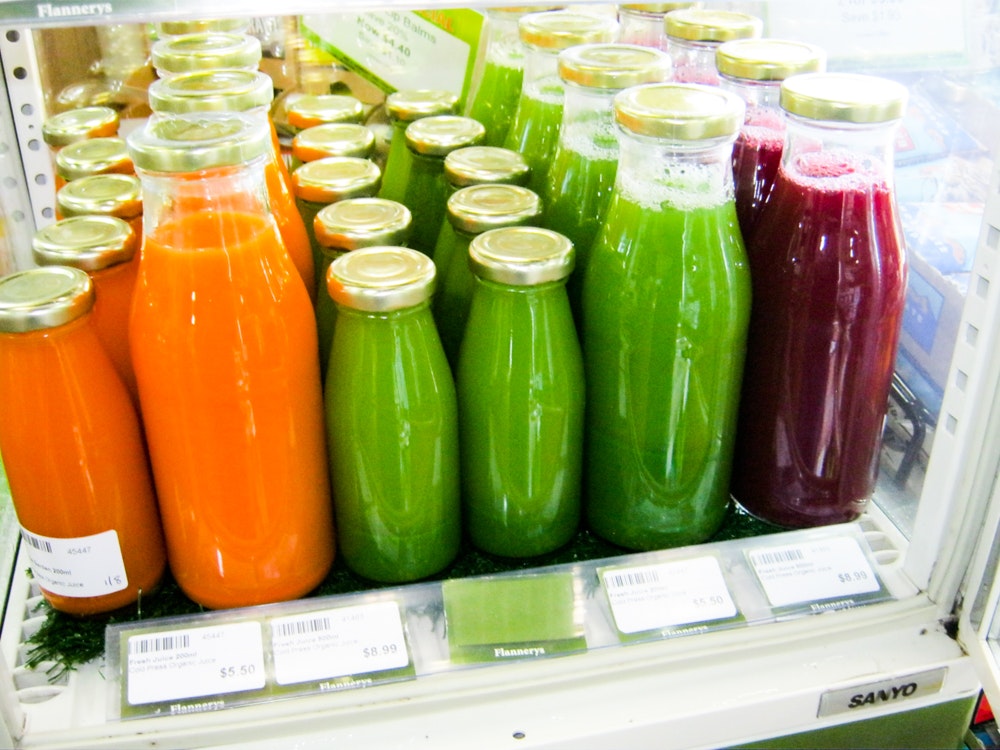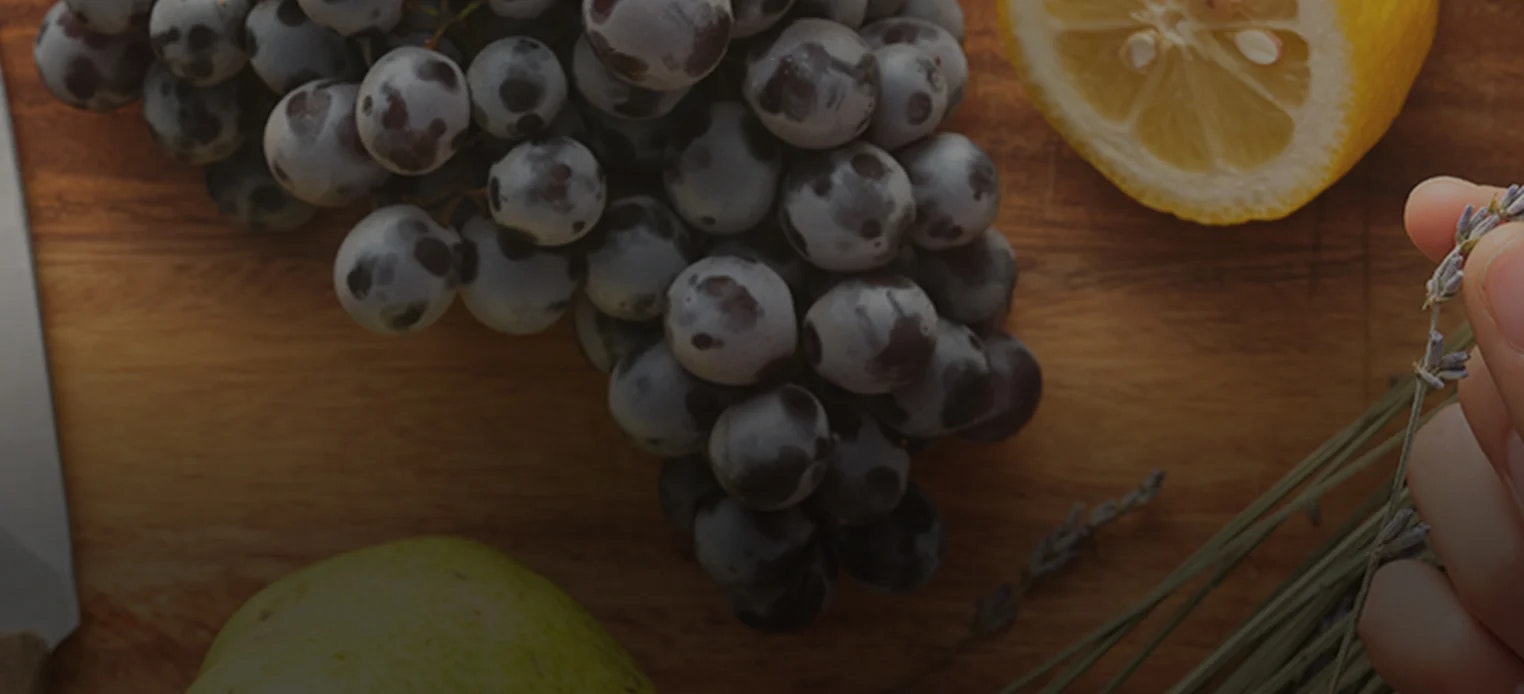Guest post by Paul Baudier, cold pressed juice, raw food, and smoothie consultant.
How much produce should I plan on buying for my new cold pressed juice business?
How much produce to order is a dilemma every operator faces. Do you under or overestimate? What is better for the bottom line? This can be as simple as how many bottles you choose to keep on hand or as complex as your entire production order. I always give my clients a good estimate for their opening orders- based on my experience- but what if you’re new to the game and have no clue what your par levels should be? How do you find your sweet spot?

Do the research
One simple but time-consuming way to do this is to sit outside a popular, well established juice bar in your neighborhood and count how many products are coming out of the store. This will give you a better idea of what you can achieve once your business is thriving.
The next step would be to find a different store that’s just starting out and do the same, hoping that your sales will be somewhere in the middle.
After you have this very rough info you will have a sense of what is achievable, although with great strategy and product, you could always outperform these competitors. Once you’ve crunched the numbers based on estimated competitor sales, include a 25% margin of error that takes into account special events, sales and holiday closures. This field research will help you when placing initial orders.
After you’re open
The above research will give you a good estimate of what to plan for, but to get it truly right you need to look at your sales once you get going and continuously tweak your par levels to make sure you’re not leaving money on the table (or in the bottle, in our case).
Sounds simple right? Well just keep in mind how complicated these estimated output levels can be; How many hours are you open? Does your business vary based on the day of the week? Will you be affected by seasons or holidays in a major way? You need to really analyze your business from all angles on a macro level before you can be confident that your estimated sales numbers are on par, and then not be too attached to them. If you have a good – or terrible – first quarter those numbers can go right on the window. Unfortunately, the real world has never obeyed the dictates of a spreadsheet!
Once you’ve calculated your estimated sales and feel pretty confident how much juice you need to produce, and have your order ready to go, here are a few other pitfalls to be on the lookout for:
1.) Bad / spoiled produce:
This problem can be taken care of by training your staff to check all produce when it enters the facility and telling them what they should be looking for when checking out each specific produce item.
2.) Thinking that you know exactly how much produce will create the exact number of juices:
How many “trial runs” will you undergo with a case of kale before you’re confident you’ve gotten the number down? Do your purveyors’ products ever vary so greatly as to offset your estimates? Remember last week when you had to run to the store to get more produce as your counts were not as accurate as you thought they were? What about the other day when you looked in the fridge and you had left over juice?
You get the picture… It’s a delicate balance that can only be achieved by knowing exactly what your produce extraction rates are. It’s not the same everywhere, so you will have to do your own testing. Kale from New York and kale from California have different yield rates as they both have different weather variables. There is a simple solution for this: While juicing, keep track of what you are getting out of your produce. Then, calculate this into your production formula. Once you have this right you can then look are your sales mix summary and calculate how many bottles of juice you need and this will FINALLY give you the right amount.
Conclusion
The juicing business has a lot of intricacies that other industries don’t have to take into play: short shelf-life, availability of products by region, seasonal discrepancies, mother nature! In order to run a profitable business, operators have to be diligent in maintaining accurate pars and product order levels as they may change at a moment’s notice due to a natural disaster where your ginger is grown, or a cold front in your town. It’s ultimately a rewarding business but not one that allows you to just sit back and rest on last year’s research. Stay actively involved in your entire juicing process and you’ll find happiness at the bottom of a bottle!
Comments
I do not agree that
http://www.foxnews.com/food-drink/2012/03/11/10-reasons-organic-food-is-so-expensive.html
Hi Paul.
It was a pleasant surprise to find your site and your comments.
I'm learning about the benefits of raw juices for health and wanting to introduce in my routine.
Hi paul.
I live in a country town and here still has no company produzinda pressed juice cold. I'm thinking of starting a small business from home delivery subscription.
I would like to hear from you and where do you get if you were me.
Emerson Raposo - Rio das Ostras -RJ Brazil
Now I am very happy for your attention and contribution. Thank U!
Emerson Raposo.
Hi Paul,
I'm writing from South Korea. Thanks for the great article, it is really helpful and wish to see more post from you 😄 Just like other countries, juicing is earning people's attention and more and more people are willing to pay for cold pressed juices and cleansing programs in Korea. Me and my friend are both from i-banking background and we love juicing! We are in the process of opening a juice shop. If you can help us with a few introduction recipes, it would be very appreciated :)
This was a great article that I've re-read a couple times in the last month. I would imagine seasonality of produce and also different market dynamics would make forecasting how much product to have on hand a difficult "art" to master. With that in mind, does that mean entrepreneurs are more likely to ease in to the juice press business online or by offering special order/home delivery only as opposed to going all in on brick and mortar operations right away?
Hi Mike, I'll respond here now, maybe Paul will chime in Later. You are absolutely right that many of the new companies are starting as a juice / cleanse delivery service. I've even seen companies start on Facebook with no website! Brick and mortar stores are great for showcasing your brand, you can think of it as advertising, but they do require a large investment of time, money, human resources, planning, etc.
If you are just doing delivery in the beginning you should try to set up some juice tasting at local businesses (grocery stores, yoga studios, gyms, farmers markets) so people can get a feel for your products.
Hey Paul
Writing from South-Africa, living on a farm close to the Kruger Park. The closest town is Malelane and a real farm community. I started juicing 6 months ago and I am feeling so good, my energy levels are much higher than normal and decided that I want to open a juice shop in our town. South Africa has just started with the idea of juicing, therefore their is a lot of education in our town needed about juicing! I wanted to start with only a few different types of juices on my menu-don't want to scare my customers away with unknown combinations, but in the same time I want them to experience the difference when start drinking my juice. Can you please help me with a few introduction recipes?Regards Belinda
Shoot me an email I'll fwd you a few!


Comment